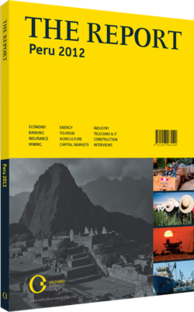Tax development: New rules for the economy include indirect transfer of shares, derivative agreements, export of services and rates
Over the last 10 years the Peruvian economy has shown a significant upward trend which has been mainly reflected in a sustained year-on-year GDP growth. In 2010, Peru’s GDP increased by 8.8%, ending a decade long period of growth with an average of 5.7%. According to the data and forecasts released by the Central Reserve Bank of Peru, in 2011 the GDP grew by 6.9%. Growth projections for 2012 and 2013 are 5.5% and 6.3%, respectively.
It should be noted that, between 2008 and 2009 Peru received, from the world’s major risk ratings agencies, credit rating upgrades and investment grade status. In August 2011 Standard & Poor’s raised Peru’s credit rating from “BBB-” to “BBB”.
When it comes to the role of political affairs, the newly elected government, which began its term by taking office on July 28, 2011, has confirmed in both local and international forums its intention to maintain the focus on attracting all private and public investors who wish to invest in Peru.
To that end, it has been eying a number of policy adjustments, some of which already look to be coming into force, with others soon following.
It is worth noting that one of the major policies of the newly elected government is to seek to make the economic benefits available to all social stratums, especially to those living in conditions of extreme poverty. Undoubtedly, this will require greater efforts to be made in areas such as education, health care and human development.
From a fiscal point of view, Peru has increased considerably its tax collection. Indeed, as it was reported by the superintendent of the Peruvian Tax Administration, tax collection in 2011 grew by 10.3%, increasing to some $28bn.
In this regard, the government has enacted Law No. 29663, Supreme Decree No. 213-2011-EF, Law No. 29646 and Law No. 29666. These new rules include the incorporation as a taxable gain of the indirect transfer of shares, taxation of derivative agreements, modifications to the list of export services and changes in the value-added tax (VAT) rate.
INDIRECT TRANSFER OF SHARES: Law No. 29663 established that income generated from indirect transfer of shares of domiciled companies will be considered as Peruvian-sourced income, and therefore, subject to income tax.
It should be noted that an indirect transfer of shares occurs when shares from a non-domiciled company are transferred and when this non-domiciled company owns shares of a domiciled company, directly or through other companies, as long as (i) over the 12 months prior disposal the market value of the domiciled company’s shares held by the non-domiciled company directly or through other companies equals 50% or more of the market value of shares of the non-domiciled entity, or (ii) the non-domiciled entity resides in a tax haven.
DERIVATIVE AGREEMENTS: Supreme Decree No. 213-2011-EF established that any income obtained from derivative agreements entered into with domiciled entities when the underlying element is the exchange rate of local currency with a foreign currency and its effective term is for less than 60 calendar days, such income will be considered to be of Peruvian source and hence it will be taxable in Peru.
EXPORT OF SERVICES: Law No. 29646 introduced changes in the definitions, classifications and types of transactions giving rise to the export of services for VAT determination purposes. These changes are intended to encourage and promote foreign trade of services in Peru, given that the export of services is subject to VAT at a 0% rate.
RATES: Law No. 29666 changed the VAT rate from 19% to 18%. The Peruvian government estimates that with these new rules the number of taxpayers and the amount of taxes collected will soon increase.
You have reached the limit of premium articles you can view for free.
Choose from the options below to purchase print or digital editions of our Reports. You can also purchase a website subscription giving you unlimited access to all of our Reports online for 12 months.
If you have already purchased this Report or have a website subscription, please login to continue.

